Bird's nest ferns have lower humidity requirements than most ferns, grow best in low or medium indirect light, and will even tolerate small pots and soil that's been allowed to dry out. Put one where its broad, sword-shaped leaves can capture filtered sun for a stunning tropical accent in any number of settings.
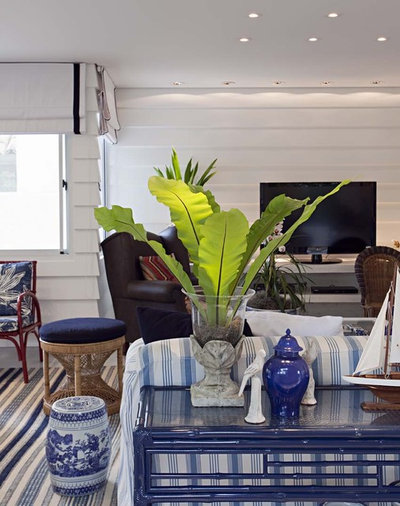
Studio Marcelo Brito
Bird's nest ferns are epiphytic, meaning that in the wild they very often grow on a host, like a tree trunk, fallen branches or even a bromeliad plant, though they are also capable of growing on the ground. Because it can grow in a minimum amount of organic material, this fern can be planted or placed in a variety of decorative containers, even those that may seem small given the plant's dimensions.
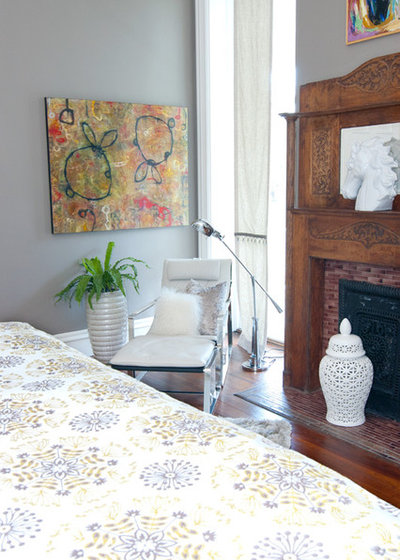
Zimmerman Interiors
Bird's nest grows a deep rosette of large, shiny, spear-shaped fronds. It was given its name because of the way new fronds unfurl from the center of the plant, creating the look of a nest. The new fronds are fragile, so be sure to put your fern in a spot where it won't get disturbed or brushed against.
In nature the bird's nest fern collects water in the center of its rosette, much like a bromeliad. Avoid watering houseplants in this area, because the standing water can lead to rot. Provide water to the plant via the soil. Misting is recommended, too.

Will Johnson Building Company
Bird’s nest ferns grow best in medium to low indirect light. Their distinctive crinkly leaves vary depending on the amount of light they receive. Bright light will produce a bird’s nest fern with crinkled leaves, while less light will result in flatter leaves.
Keep the fronds dust free by spraying with water and gently wiping with a damp cloth. Spray-on leaf shining products should be avoided with ferns, because they can severely damage their delicate fronds. Additionally, if you find an infestation of scale insects, which look like small, brown discs (don't confuse them with spores), spray the fronds with soapy water followed by clean water. Insecticides are not recommended for use on sensitive ferns.
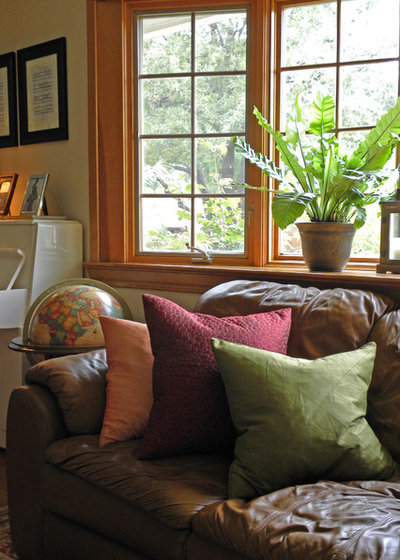
Sarah Greenman
The secret to a healthy bird's nest is providing enough warmth and moisture. When these two conditions are properly met, the ferns also can withstand higher light levels. A shower ledge by a window, for example, is a good place for a healthy bird's nest fern.
While a large bird's nest fern looks lovely on this window sill, take note that too much light and especially direct sunlight can cause the fronds to yellow and die. On the other hand, as they age, the ferns elongate above the soil level, and the lower fronds turn brown. This is normal. Just trim at the base to keep the plant looking healthy.
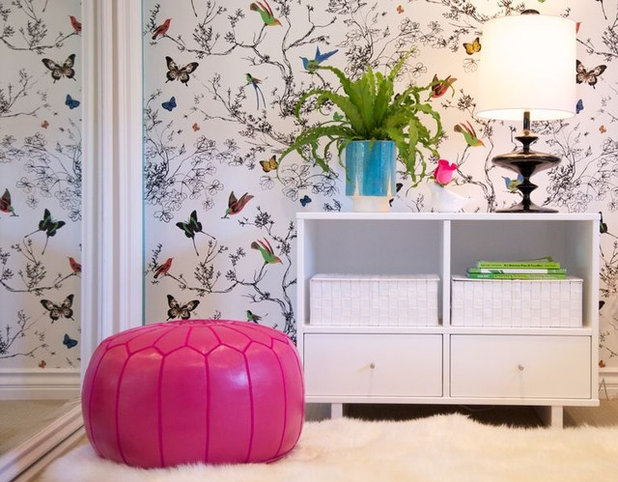
JAC Interiors
While widely available as a houseplant, bird's nest fern is native to quite a few exotic locations spanning the globe.
Asplenium nidus, whose fronds can grow as long as 5 feet in its native habitat, is found in tropical southeastern Asia, eastern Australia, Hawaii, Polynesia, Christmas Island, India and eastern Africa.
Asplenium australasicum, the more common houseplant, whose fronds reach a length of about 2½ feet in its natural warm, humid and shady environment, is native to eastern Australia exclusively.
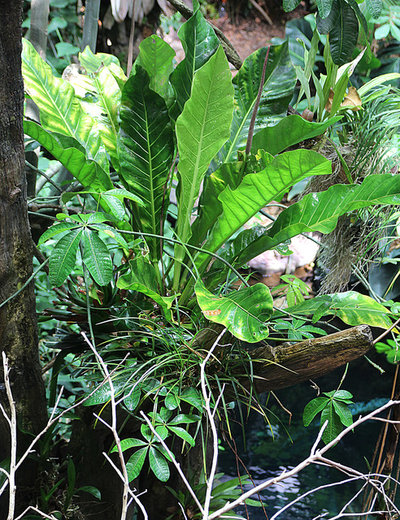
creative jewish mom.com
This photograph, of the California Academy of Sciences' walk-through rain forest exhibit, shows a bird's nest frond close up in its natural environment. Bird's nest fern has a built-in design option for the houseplant lover who needs to keep plants out of easy reach: It can be mounted to planks of wood, much like a staghorn fern, and hung on a wall.
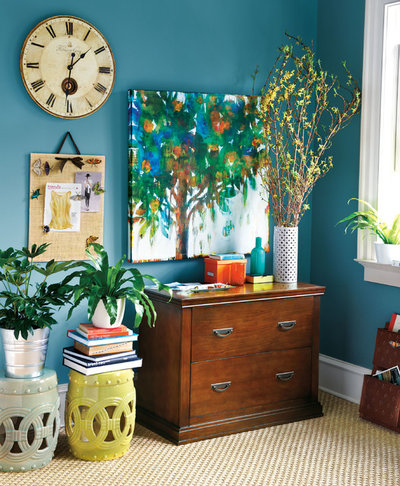
Ballard Designs
How to Care for Your Bird's Nest Fern:Temperature: The optimum temperature range is 60 to 80 degrees Fahrenheit (16 to 24 degrees Celsius). The plants will begin to suffer below about 55 degrees for prolonged periods, and they prefer 70 to 80 degrees, with high humidity. A seedling heat pad can often help dormant plants.
Light: Give it bright filtered light to moderate shade, with no direct sun exposure, other than very early morning sun. Turn the pot regularly to ensure symmetrical growth.
Water: This is a true jungle plant that thrives with evenly moist soil and the highest humidity possible. Water it less in winter and never apply water to the center rosette, because it can cause rot. Yellow fronds are a sign of overwatering.
Soil: Use loose, rich organic compost or peat-moss-based soil.
Feeding: During spring and summer, fertilize weekly or biweekly with balanced liquid fertilizer diluted by half. Deformed leaves with brown or yellow spots or edges are a sign of too much fertilizer.
Humidity: Moderate. Relative humidity above 50 percent is required. If necessary, use a humidity tray or a room humidifier to add moisture to the air around the fern.
Repotting: Repot no more than every other year in the spring with a pot that's just one size up, or when the roots fill the pot.
Toxicity: Nontoxic.
Interesting fact: In Taiwan
the fronds of
Asplenium australasicum are cut into pieces, fried with garlic and chili peppers, and eaten.





